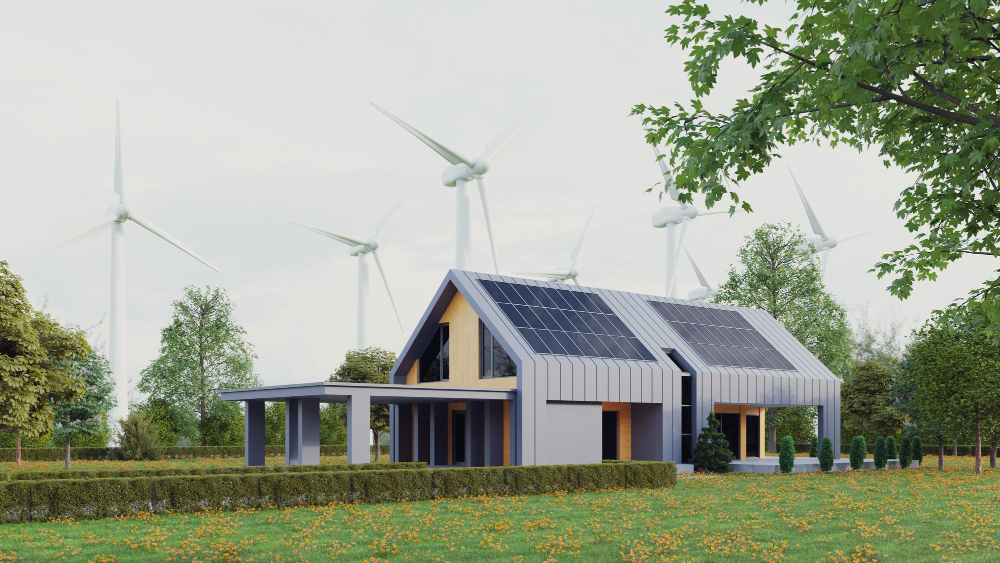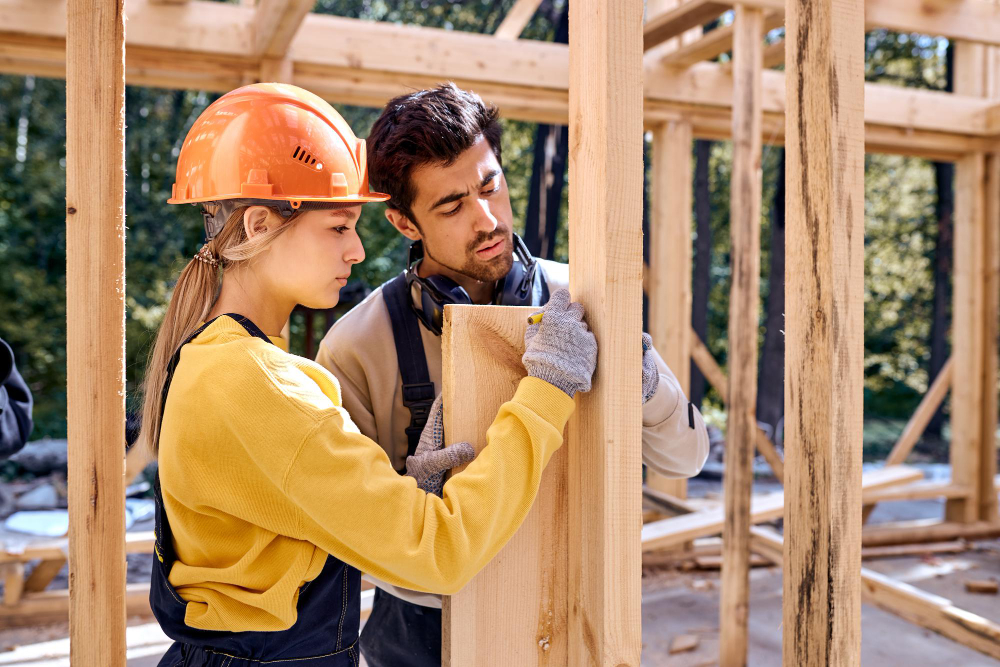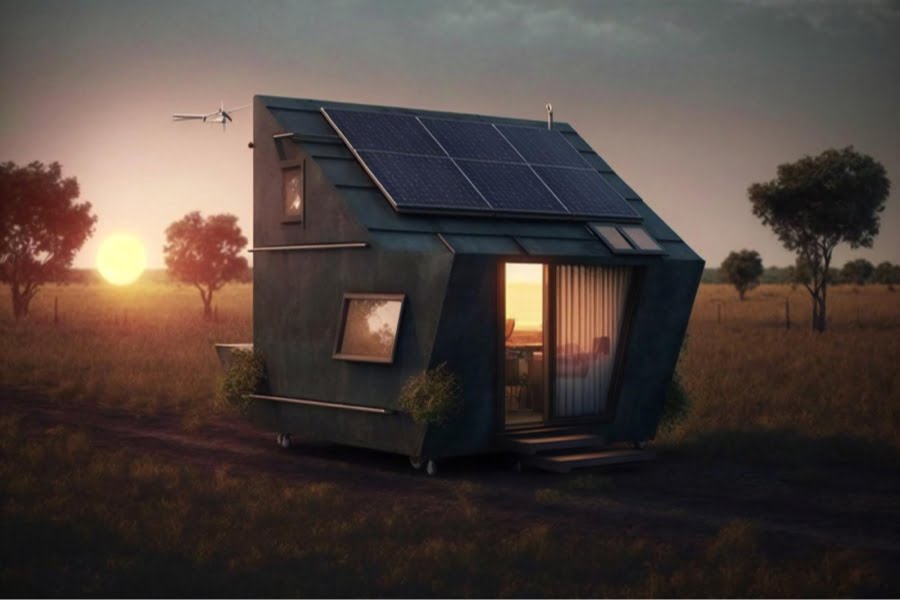Last updated on
The demand for sustainable living is on the rise, and eco-friendly homes are a hot commodity. If you’re selling a house with green features, you need a marketing strategy that showcases its unique value proposition.
If you are looking to sell your house now, here’s how to attract eco-conscious buyers and make your green home stand out.
What Qualifies as Green?
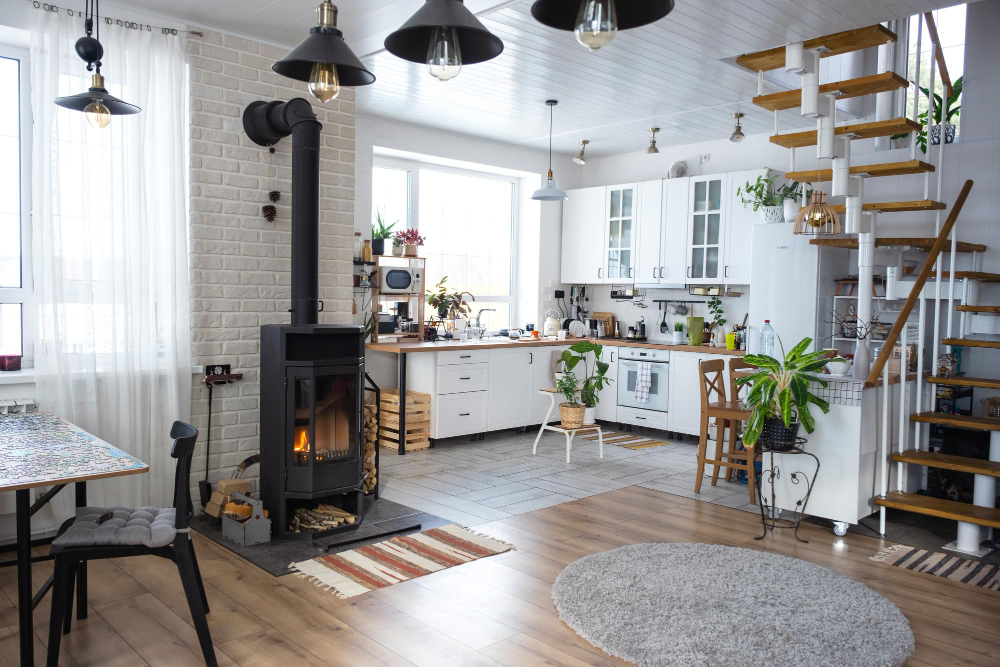
An eco-friendly or green home is designed and built to have minimal negative impact on the environment and to promote the health and well-being of its occupants. Several key factors and practices qualify a home as eco-friendly:
- Energy Efficiency: Eco-friendly homes utilize renewable energy sources like solar or wind power, alongside high-efficiency appliances and smart technology to minimize energy use. The design itself might also cleverly optimize natural temperature control, keeping you comfortable without cranking up the AC.
- Water Conservation: Green homes feature low-flow fixtures throughout, reducing water consumption without compromising functionality. Some might even go the extra mile with rainwater harvesting systems, giving your garden a guilt-free drink.
- Sustainable Materials: Eco-friendly homes are constructed using recycled, renewable, or eco-friendly materials like sustainably sourced wood. Non-toxic finishes ensure a healthy indoor environment.
- Indoor Air Quality: These homes prioritize good indoor air quality with the use of low-VOC materials that minimize harmful emissions. Effective ventilation systems further ensure a healthy and comfortable living space.
- Land Use And Biodiversity: Eco-friendly homes are designed to integrate with the surrounding environment. This might involve preserving native landscapes or incorporating features that support local wildlife.
- Waste Reduction: These homes are designed to minimize waste. Features like built-in recycling and composting options make eco-conscious living a breeze, while durable construction ensures a long lifespan for the home itself.
- Smart Design: Eco-friendly homes often prioritize efficient layouts that maximize space without excess square footage. Smart use of natural light and air ventilation further reduces the environmental impact.
In essence, an eco-friendly home is characterized by its low environmental impact, sustainability, and healthful living environment.
Marketing Green Homes
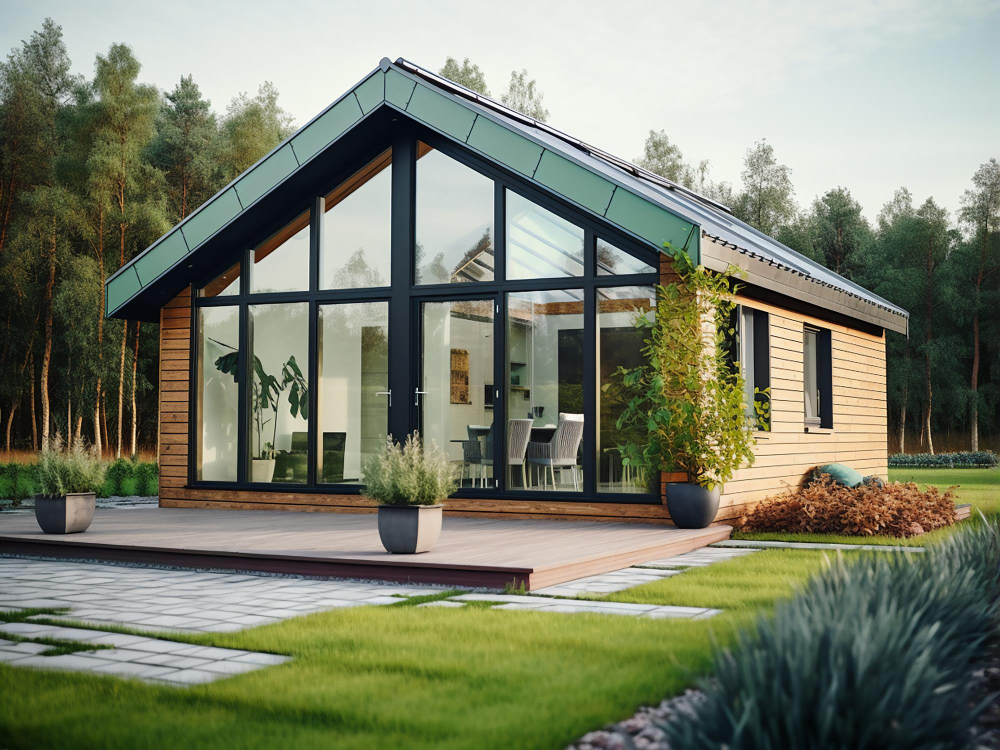
Effectively marketing an eco-friendly home requires highlighting the unique benefits that resonate with potential buyers’ values, priorities and the tangible advantages of sustainable living. Here are strategies to consider if you want to sell your Revere house now or another property elsewhere:
- Emphasize Cost Savings: Highlight the long-term savings on energy bills and maintenance costs due to features like solar panels, high-efficiency appliances, and durable materials. Real-life examples or comparisons can be very persuasive.
- Showcase Health And Comfort Benefits: Detail how the home’s design and materials contribute to healthier indoor air quality and overall comfort. Stress the use of non-toxic materials and the advantages of natural light and optimized airflow.
- Leverage Certifications And Ratings: If the home is certified by recognized programs like LEED (Leadership in Energy and Environmental Design), ENERGY STAR, or others, these credentials should be prominently displayed. They serve as a testament to the home’s environmental and energy performance standards.
- Highlight Environmental Impact: Educate potential buyers on how the home’s features contribute to environmental conservation, such as reduced carbon footprint, water conservation through rainwater harvesting systems, and landscaping with native plants that support local biodiversity.
- Use Visuals And Virtual Tours: Offer high-quality photos and virtual tours that emphasize eco-friendly features. Visual storytelling can help buyers imagine living in the space and appreciate the sustainable aspects of the design.
- Offer Educational Resources: Provide resources that help potential buyers understand the benefits and operations of eco-friendly features. This could include guides on how solar panels work, the benefits of energy-efficient appliances, or how to use a rainwater harvesting system.
- Create A Lifestyle Appeal: Market the home not just as a place to live but as a lifestyle choice that aligns with values of sustainability, wellness, and responsibility towards the environment. Highlight community features, if applicable, like access to green spaces, community gardens, or eco-friendly transportation options.
- Try Targeted Marketing: Identify and target market segments likely to be interested in eco-friendly homes, such as environmentally conscious individuals, health-conscious families, and technology enthusiasts interested in smart home features.
- Leverage Testimonials And Case Studies: Share stories or testimonials from current residents who have experienced the benefits of living in an eco-friendly home. Real-life endorsements can be very compelling.
- Collaborate With Eco-Friendly Brands: Partner with brands that offer eco-friendly products and services for cross-promotion. This can increase visibility among potential buyers who already prioritize sustainability in other aspects of their lives.
By focusing on the unique selling points and benefits of eco-friendly homes, marketers can attract buyers who are looking for sustainable, healthy, and cost-effective living solutions.
The Takeaway
Successfully marketing an eco-friendly home involves more than just listing its features; it’s about selling a sustainable lifestyle. By leveraging the strategies above, sellers can connect with buyers who prioritize environmental responsibility. In doing so, they not only contribute to the green movement but also tap into a growing market that values sustainability above all.
Related reading:
Table of Contents

